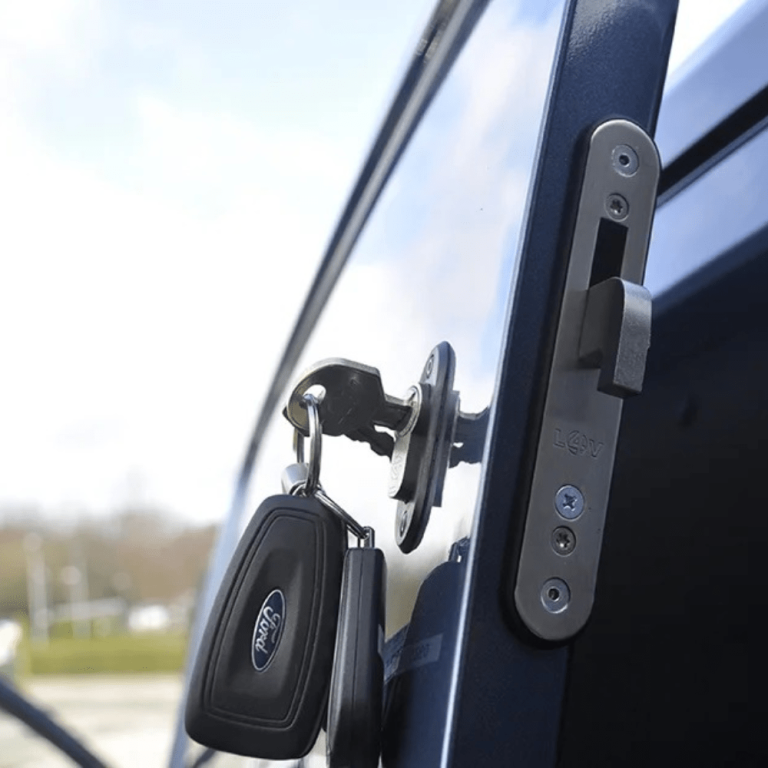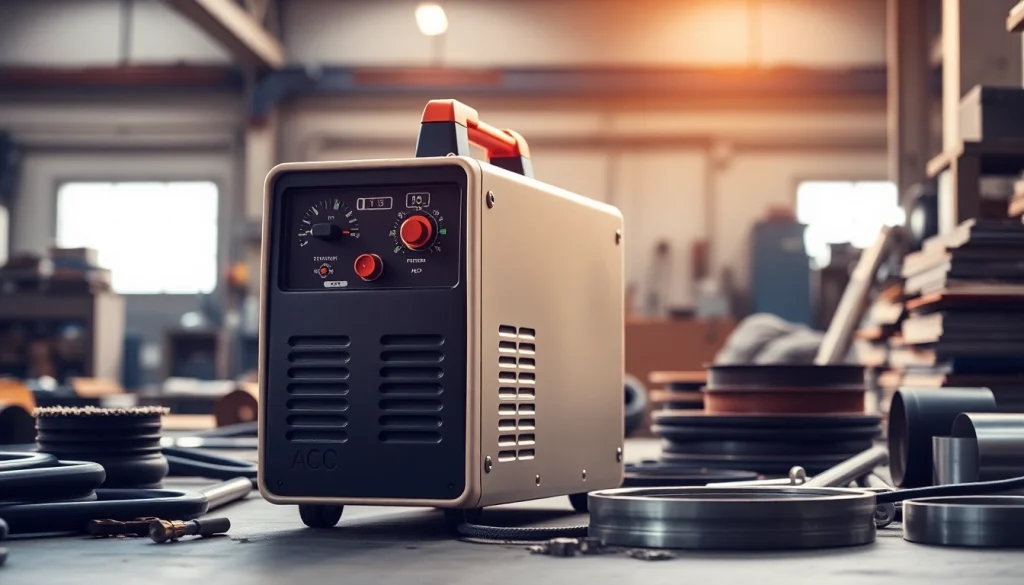Understanding AC DC TIG Welders
What is an AC DC TIG Welder?
An ac dc tig welder is a welding machine designed to provide both alternating current (AC) and direct current (DC) options for welding various metals. The ability to switch between AC and DC is crucial for welding different materials, especially those that require specific electrical characteristics for optimal results. AC is particularly effective for welding aluminum and magnesium, as it helps break down the oxide layer that forms on these metals. On the other hand, DC is preferred for more commonly used metals like stainless steel and carbon steel, ensuring a clean and stable arc while providing deeper penetration during the welding process.
Key Features and Benefits of AC DC TIG Welders
One of the standout features of AC DC TIG welders is their versatility. They can handle a wide range of materials and welding tasks, making them suitable for both novice and experienced welders. Here are some key benefits:
- Material Compatibility: AC DC TIG welders can effectively weld metals such as aluminum, stainless steel, carbon steel, copper, and titanium, among others.
- Precision Control: With the ability to fine-tune current settings, welders can achieve high levels of precision for intricate tasks.
- Clean Welding: The process produces clean welds with minimal spatter, reducing the need for post-weld cleanup.
- Portability: Many models are designed to be lightweight and portable, making them suitable for both onsite and workshop use.
- Multi-Purpose Functionality: Beyond TIG welding, some models can also be used for stick welding, enhancing their usability.
The Best Applications for AC DC TIG Welding
AC DC TIG welders are used in a variety of applications across multiple industries. Some of the best applications include:
- Aerospace: Due to the need for precision and quality, TIG welding is commonly used in constructing aircraft and components.
- Automotive: The automotive industry utilizes TIG welding for high-strength components and when working with thin materials.
- Art and Sculpture: Artists and sculptors use TIG welding to create intricate designs and installations that require precise control.
- Marine: TIG welding is optimal for boat building and repair due to its ability to weld aluminum and stainless steel.
- HVAC: HVAC systems often require precise welding of copper and aluminum, making TIG the ideal choice for ductwork and piping.
Selecting the Right AC DC TIG Welder
Factors to Consider When Choosing an AC DC TIG Welder
Selecting the right AC DC TIG welder involves various considerations, including:
- Amperage Range: Different projects require different amperage levels. Select a welder that can accommodate the range you’d typically use for your projects.
- Portability: If you need to transport your welder, look for a compact, lightweight option with a durable design.
- Duty Cycle: The duty cycle indicates how long you can weld before needing a break. A higher duty cycle is generally preferable for professional or heavy-use applications.
- Control Features: Advanced models come with features like pulse settings and digital displays, which can enhance control and precision.
- Price and Warranty: Compare different models within your budget, but also consider warranty lengths as indicators of quality.
- Brand Reputation and Support: Invest in a brand known for reliability and customer service. Reviews from other users can provide insight into these factors.
Top Models and Their Specifications
Some of the top AC DC TIG welders on the market include:
- Everlast PowerTIG 250EX: Offers both TIG and stick capabilities, with a maximum output of 250 amps, suitable for a variety of metals.
- PrimeWeld TIG225X: Known for its excellent performance on aluminum, this welder features dual voltage and high-quality foot control.
- Miller Dynasty 210: A popular choice among professionals, it features advanced inverter technology for superior arc stability and has a duty cycle of up to 60% at 200 amps.
Price Ranges and What to Expect
The price of AC DC TIG welders can vary significantly based on brand, features, and capabilities. Generally, expect to pay:
- Entry-Level Welders: $500 – $1,000. Suitable for beginners and light projects.
- Mid-Range Welders: $1,000 – $3,000. Ideal for hobbyists and professionals who need a reliable machine for various projects.
- High-End Welders: $3,000 and up. Designed for industrial applications, offering advanced features and superior performance.
Setting Up Your AC DC TIG Welder
Essential Tools and Accessories
Before setting up your AC DC TIG welder, gather the necessary tools and accessories:
- Gas Supply: Argon gas is typically required for TIG welding; ensure you have a suitable tank.
- Electrodes: Choose the appropriate type of tungsten electrodes based on your welding material.
- Filler Rods: Select filler rods that match the base materials you will be welding.
- Protective Gear: Safety glasses, gloves, and a welding helmet with the right shade are essential for protection.
- Clamps and Fixtures: These tools help secure your workpiece in place for stability.
Step-by-Step Setup Instructions
Setting up your AC DC TIG welder requires careful attention to ensure safety and effectiveness:
- Choose a Suitable Workspace: Ensure your workspace is clean, well-ventilated and free of flammable materials.
- Install the Gas Cylinder: Secure the argon gas cylinder in an upright position, connecting it to the welder via the regulator.
- Set Up the Electrode: Insert the appropriate tungsten electrode into the torch, making sure it’s secured tightly.
- Connect the Filler Rod: Have the filler rod available and accessible for use during welding.
- Adjust the Settings: Set the amperage according to your material and requirements, and test the gas flow.
- Protect Yourself: Put on all personal protective equipment before starting the welding process.
Safety Tips for Using Your Welder
Welding can be hazardous if proper safety precautions are not taken. Consider these safety tips:
- Wear Protective Gear: Always wear a welding helmet, gloves, and protective clothing to prevent burns and eye damage.
- Handle Gas Cylinders Carefully: Store gas cylinders securely and away from heat sources.
- Maintain Ventilation: Work in a well-ventilated area to avoid inhaling harmful fumes.
- Check Equipment Regularly: Inspect cables, hoses, and the gas supply regularly for wear and damage.
- Have Emergency Equipment on Hand: Keep a fire extinguisher and first aid kit nearby in case of accidents.
Techniques for Effective TIG Welding
Basic Techniques for Beginners
For newcomers to TIG welding, mastering the basics is crucial. Here are some essential techniques:
- Proper Torch Hold: Hold the torch at a comfortable angle, typically 15-20 degrees from vertical, to achieve a steady arc.
- Pocket Technique: Create a “pocket” for the weld pool by keeping the torch and filler rod close together.
- Controlling Heat Input: Move the torch slowly and steadily while adjusting the amperage to manage heat effectively.
- Practice on Scrap Metal: Practice welding on scrap pieces to build confidence before working on actual projects.
Advanced Welding Techniques with AC DC TIG
Once familiar with the basics, welders can explore advanced techniques, such as:
- Pulsed TIG Welding: Utilizing pulsed settings to reduce heat input, which is beneficial for thin materials.
- Weaving Patterns: Implementing patterns for stitching welds, particularly when dealing with larger weld areas.
- Tack Welding: Using small welds to hold pieces together before completing the full weld, ensuring safety and accuracy.
- Manipulating Heat Input: Adjusting the heat input based on joint design to control the weld pool effectively.
Common Mistakes and How to Avoid Them
Even experienced welders encounter challenges. Here are common mistakes and how to rectify them:
- Inconsistent Travel Speed: Varying speeds can lead to an uneven bead. Focus on maintaining a constant pace throughout.
- Improper Torch Angle: An incorrect angle can create defects; ensure the torch is at the right position as indicated earlier.
- Overheating: Excess heat can warp materials; balance between speed and amperage to control heat input.
- Not Cleaning the Base Material: Insufficient cleaning can lead to contamination. Always clean the surface before welding.
Maintenance and Care for Your TIG Welder
Routine Maintenance Checklist
Regular maintenance ensures the longevity and reliability of your AC DC TIG welder. Follow this checklist:
- Inspect Cables and Hoses: Look for signs of wear or damage and replace any frayed cables.
- Check Gas Levels: Monitor the argon gas levels regularly, replacing the tank as necessary.
- Clean the Torch: After use, clean the torch nozzle and replace worn parts as needed.
- Examine Electrical Connections: Ensure all electrical connections are tight and free of corrosion.
- Store Properly: Store the welder in a dry, clean environment to protect it from rust and damage.
Troubleshooting Common Issues
Despite proper maintenance, problems may still arise. Here are solutions to common issues:
- Inconsistent Arc: Check for loose connections, and ensure the settings are appropriate for the task.
- Tungsten Contamination: If the tungsten is contaminated, regrind or replace it to restore function.
- Gas Flow Issues: Inspect the gas flow meter and connections. Clean filters if necessary.
- Excessive Spatter: Adjust the amperage settings and ensure proper torch angle to minimize spatter.
Maximizing the Lifespan of Your AC DC TIG Welder
To ensure your AC DC TIG welder lasts, consider the following best practices:
- Regularly Replace Consumables: Change out old electrodes and nozzles to ensure optimal performance.
- Avoid Overheating: Give your welder breaks in line with the duty cycle to prevent overheating.
- Routine Cleaning: Keep the welder clean to prevent dust and debris build-up that can negatively affect performance.
- Educate Yourself: Stay updated on new techniques and maintenance practices within the welding community to continuously improve.





